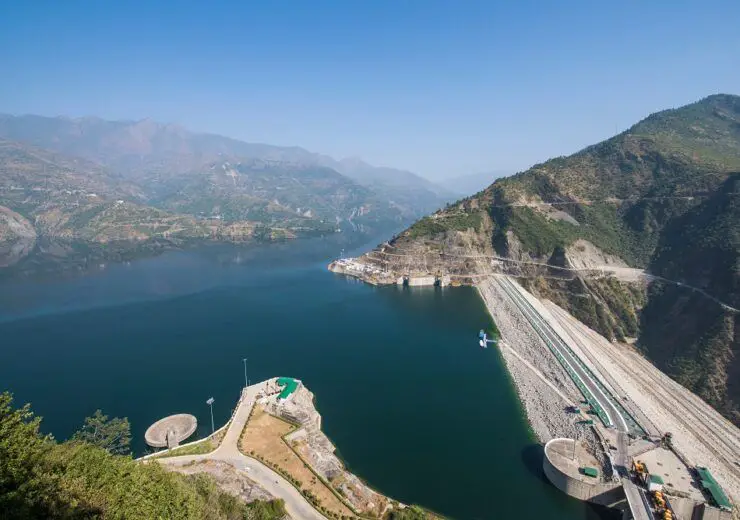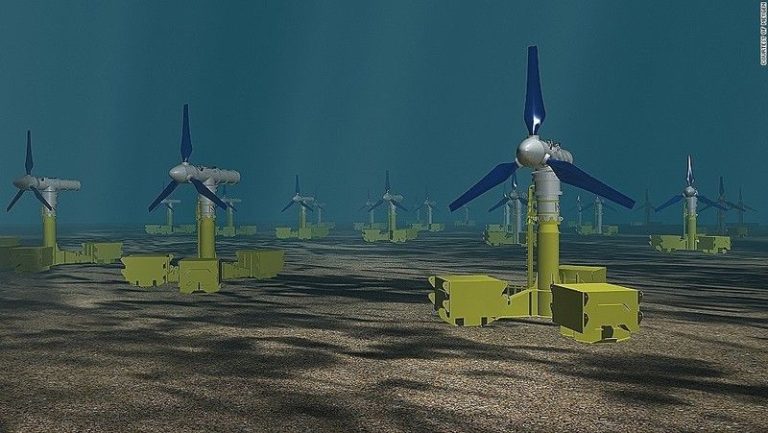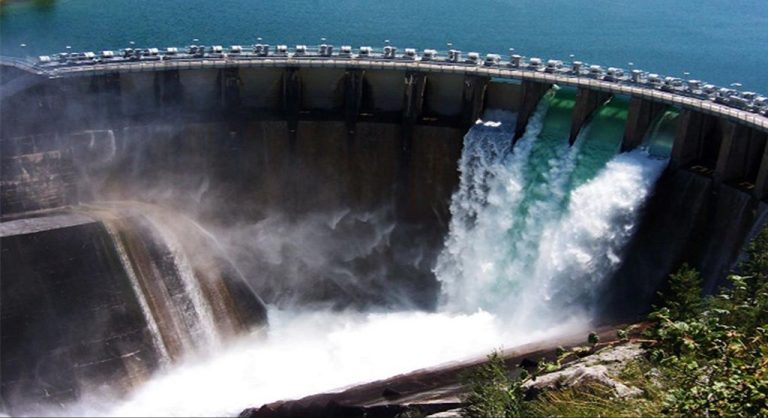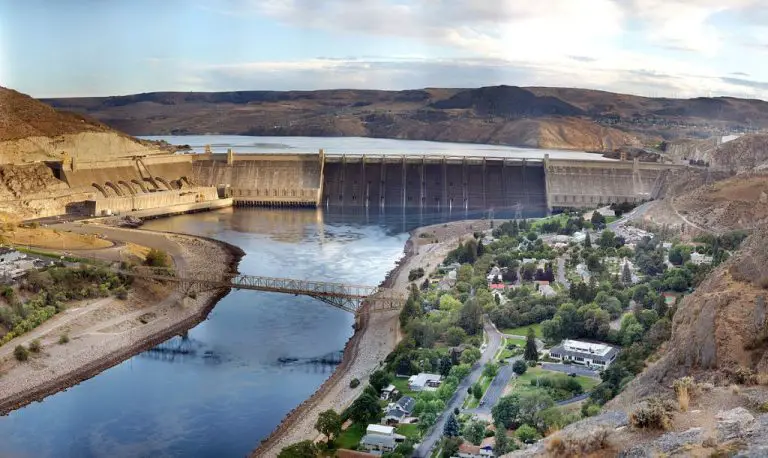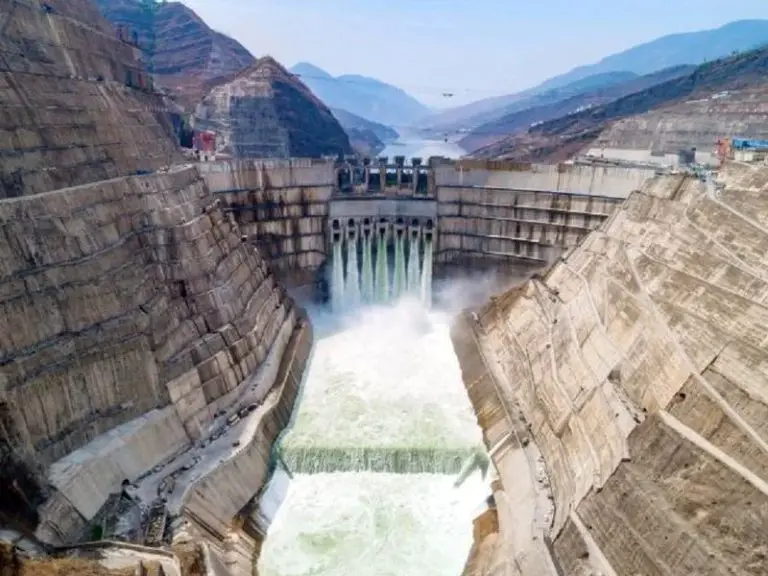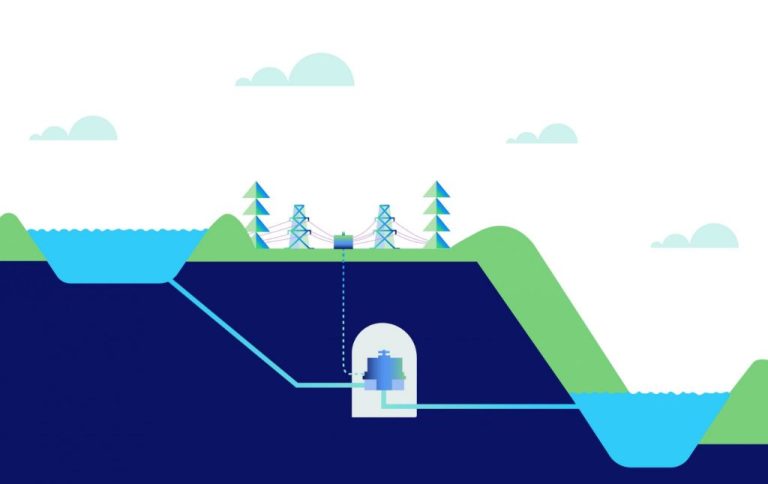Is Hydropower Renewable Or Nonrenewable In India?
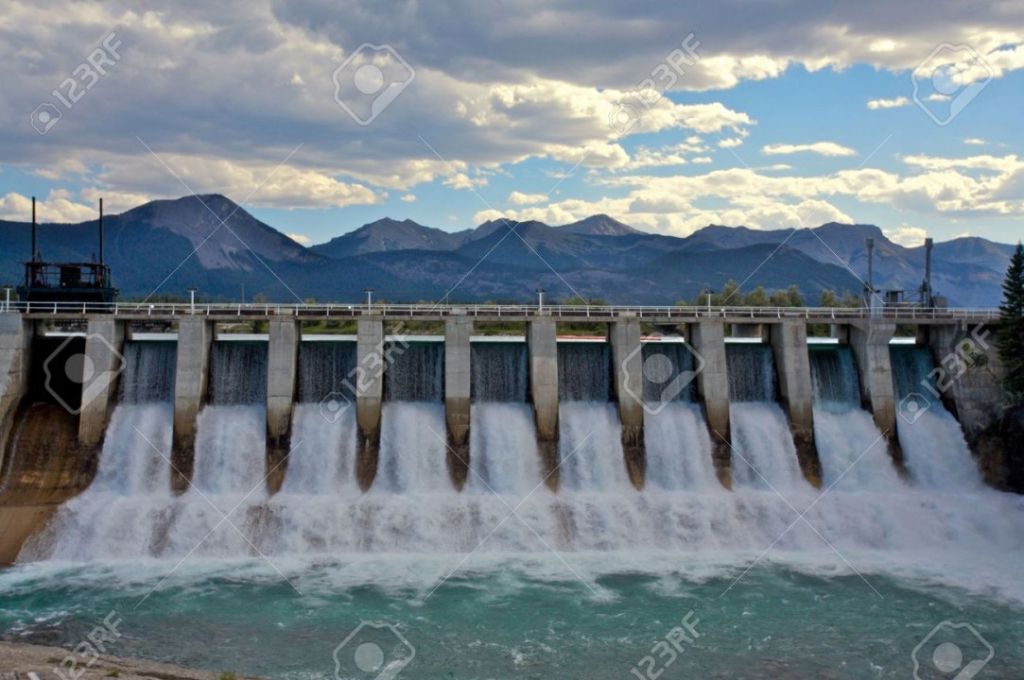
Hydropower is an important renewable energy source that harnesses the power of flowing or falling water to generate electricity. Hydroelectric dams use large reservoirs to control water flow and direct it through turbines connected to generators. The spinning turbines convert the kinetic energy of the moving water into mechanical energy, which then rotates the generators to produce electricity.
India has tremendous hydropower potential thanks to its many perennial rivers originating from the Himalayas. Hydropower currently accounts for roughly 13% of India’s total installed power capacity. It contributes approximately 24% of the total electricity generated in the country annually. With its clean energy production and ability to quickly ramp electricity output up or down, hydropower helps meet peak demand and balance variable renewable sources like wind and solar power on the grid.
Hydropower Basics
Hydropower harnesses the natural movement of water in rivers or waterfalls to generate electricity.[1] It works by using the force of flowing or falling water to spin turbines connected to generators. Dams help create reservoirs to control water flow and provide water pressure at the turbines. The moving water rotates large turbine blades inside the dam’s powerhouse. The turbine blades are connected to a shaft that spins a generator to produce electricity. The amount of electricity that can be generated depends on the volume of water flow and the vertical distance the water falls or flows.
The three main types of hydropower facilities are impoundment, diversion, and pumped storage.[1] Impoundment facilities use a dam to store river water in a reservoir. Water released from the reservoir flows through a turbine, spinning it to produce electricity. Diversion facilities channel a portion of a river through a canal or penstock to spin turbines. Pumped storage facilities pump water uphill to a reservoir at higher elevation during periods of low electricity demand. This stored energy is later released to spin turbines during periods of high electricity demand.
Renewable vs Nonrenewable
Renewable energy sources are those that are continuously replenished by nature and cannot be depleted. Some examples of renewable sources include solar, wind, geothermal, hydropower, and biomass (Inspire Clean Energy, n.d.). On the other hand, nonrenewable energy sources exist in finite quantities and will eventually dwindle, becoming too expensive or too environmentally damaging to retrieve. Fossil fuels like coal, oil, and natural gas are considered nonrenewable (Louisiana Department of Natural Resources, n.d.).
The key differences between renewable and nonrenewable sources are:
- Renewable sources are naturally replenished, while nonrenewable sources are finite and diminished with use.
- Renewable energy is generally cleaner for the environment than nonrenewable sources.
- Nonrenewable sources can provide more reliable, constant energy output compared to some renewables.
- Renewable energy often relies on recent technologies, while nonrenewables utilize more established infrastructure.
Hydropower’s Renewability
Hydropower is generally considered a renewable energy source because it relies on the water cycle, in which water evaporates, forms clouds, precipitates, and flows back down to the ocean (Electric Rate, 2021). As long as the water cycle continues, hydropower can be harnessed again and again. However, some argue that large hydropower dams and reservoirs may not be completely renewable. Dams disrupt the natural flow of rivers and can prevent the downstream transport of nutrients and sediment (Course Hero, n.d.). Over time, reservoirs can fill with sediment which reduces storage capacity. Additionally, methane emissions from decomposing organic matter may offset some of hydropower’s environmental benefits. While smaller “run-of-river” hydropower projects avoid some of these downsides, most experts still consider conventional hydropower technology to be primarily renewable, since the fuel source (flowing water) is continuously replenished.
Environmental Impacts
Hydropower dams can have significant environmental impacts. According to the article “The Impacts of Hydropower Dams in the Mekong River Basin” https://www.mdpi.com/2073-4441/13/3/265, the construction of hydropower dams transforms river ecosystems and can lead to biodiversity loss. Dams block fish migration routes, alter natural flood regimes, and change sediment transport. This can negatively impact fish populations and wetland areas that provide important ecosystem services.
Research also shows hydropower dams contribute to deforestation and methane emissions from decomposing organic matter. Large reservoirs created by dams emit greenhouse gases. According to one study, hydropower methane emissions have been underestimated by 20-70% in past assessments https://par.nsf.gov/servlets/purl/10288963. There are clearly a number of environmental tradeoffs that must be considered with hydropower.
Social Impacts
One of the major social impacts of hydropower projects in India is the displacement of local communities when reservoirs are created. When a dam is built, the rising waters of the reservoir can inundate villages, private land, and important cultural sites. This forces people to relocate, often losing their homes, livelihoods, and community connections in the process.
According to some estimates, hydropower projects have displaced over 21 million people in India since the country’s independence in 1947. The people affected are often tribal groups, lower castes, and other marginalized communities with little political power to oppose projects. However, even when resettlement plans are in place, displaced villagers may struggle to adapt and rebuild their lives. New land provided may be inferior, and compensation inadequate.
Major hydropower projects like the Sardar Sarovar Dam displaced tens of thousands of people, sparking protests over unfair treatment. Yet the social disruption from hydropower reservoirs continues today. While India pursues renewable energy, the human impacts on rural communities must be addressed through inclusive planning and consultation.
Renewability in India
Hydropower accounts for roughly 13% of India’s total installed electricity capacity, and approximately 25% of the total electricity generation in the country comes from hydropower plants[1]. India has an estimated hydroelectric potential of about 150,000 MW, however only about 45,000 MW has been developed so far[2]. With abundant water resources in the form of major river systems, the Government of India considers hydropower as a key renewable energy source to meet the country’s growing electricity demand in an environmentally sustainable manner.
However, some experts argue that the way hydropower is being pursued in India, large dams in particular, affects downstream river hydrology and flow. This can have negative environmental and social impacts that question hydropower’s renewability[3]. There are concerns around biodiversity impacts from submergence of forests, as well as displacement of local communities. Proper environmental impact assessments and resettlement & rehabilitation of affected people remain key challenges.
Therefore, while hydropower is considered renewable from a resource utilization perspective, in the Indian context there are sustainability issues involved with large dam projects that need to be addressed. More prudent site selection and adopting run-of-river schemes with minimal reservoirs can improve the renewability credentials of hydropower in India.
[1] https://en.wikipedia.org/wiki/Hydroelectric_power_in_India
[2] https://www.orfonline.org/expert-speak/hydropower-in-india-an-update
[3] https://www.sciencedirect.com/science/article/pii/S2405844023043591
The Verdict
Based on the research, hydropower in India should be considered renewable but with some important caveats. Hydropower relies on the water cycle, which makes the energy source itself renewable, as rainfall and river flows are replenished naturally over annual cycles (https://www.hydropower.org/iha/discover-facts-about-hydropower). However, large dam projects can have detrimental environmental and social impacts that must be carefully considered, as they may disrupt water flows, wildlife habitats, and local communities (https://kiwienergy.us/pros-and-cons-of-hydroelectric-energy/).
For India specifically, hydropower development needs to balance renewable electricity generation with sustainability. Projects should be designed to minimize ecological disruption and displacements, while ensuring equitable sharing of benefits. With careful planning and management, hydropower can be considered renewable in India. But sustainability should be prioritized over maximizing megawatt capacity alone. If projects are pursued without regard for environmental and social impacts, the renewability status would become questionable.
Future Outlook
Hydropower has significant potential for future growth in India. According to D.V. Singh, former chairman and managing director at THDC India Limited, India’s technically exploitable hydro potential is estimated to be about 150,000 MW, but only about 45,000 MW has been developed so far. This indicates large room for further growth.
However, reviving growth in the hydropower sector faces challenges like lengthy clearance processes and financing issues. The government has announced some policy initiatives like Hydro Purchase Obligation and incentives for pumped storage projects to boost hydropower. More policy support along with public-private partnerships will be key for the future sustainability of hydropower in meeting India’s renewable energy goals.
Overall, hydropower has the potential to continue serving as a reliable source of renewable electricity generation in India’s energy mix. But realizing its full potential will require addressing sustainability concerns around social and environmental impacts through careful project planning and implementation.
Summary
In summary, hydropower in India has aspects of both renewable and nonrenewable energy sources. On one hand, hydropower relies on the renewable hydrologic cycle to generate electricity. The water cycle continuously replenishes itself through evaporation, condensation, and precipitation. In this sense, hydropower can be considered a renewable resource.
However, large hydropower projects can also have detrimental environmental and social impacts that deplete resources over time. Damming rivers and changing natural water flows disrupts ecosystems, habitats, and communities. Large reservoirs emit greenhouse gases and can lose storage capacity due to sedimentation. These negative effects mean hydropower projects have a finite lifetime and cannot be sustained indefinitely.
Overall, while hydropower relies on a renewable resource, its implementation can lead to nonrenewable outcomes. With proper planning and management, hydropower in India could shift further towards renewability. But currently, it exhibits both renewable and nonrenewable characteristics.

